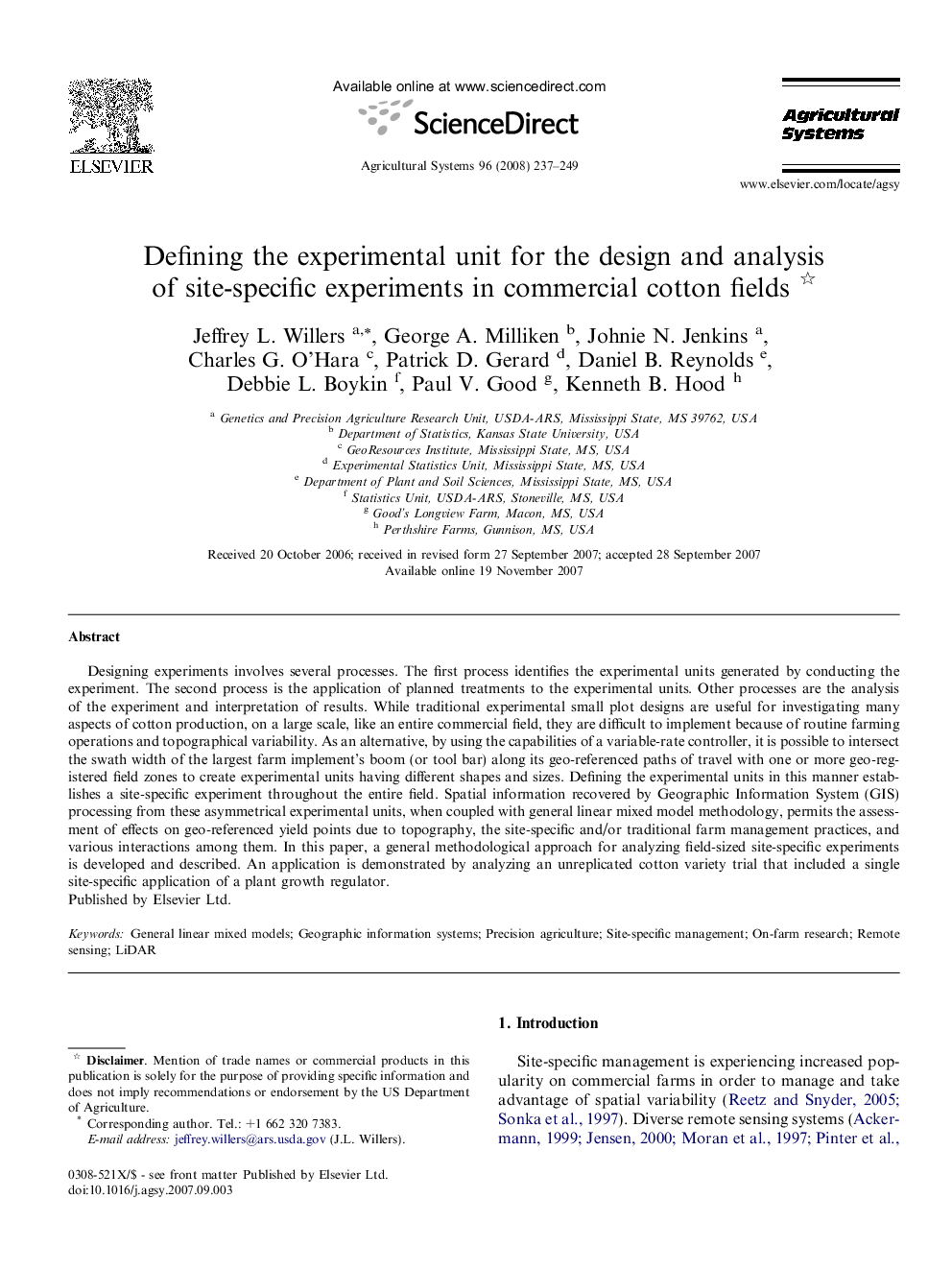| Article ID | Journal | Published Year | Pages | File Type |
|---|---|---|---|---|
| 4491881 | Agricultural Systems | 2008 | 13 Pages |
Designing experiments involves several processes. The first process identifies the experimental units generated by conducting the experiment. The second process is the application of planned treatments to the experimental units. Other processes are the analysis of the experiment and interpretation of results. While traditional experimental small plot designs are useful for investigating many aspects of cotton production, on a large scale, like an entire commercial field, they are difficult to implement because of routine farming operations and topographical variability. As an alternative, by using the capabilities of a variable-rate controller, it is possible to intersect the swath width of the largest farm implement’s boom (or tool bar) along its geo-referenced paths of travel with one or more geo-registered field zones to create experimental units having different shapes and sizes. Defining the experimental units in this manner establishes a site-specific experiment throughout the entire field. Spatial information recovered by Geographic Information System (GIS) processing from these asymmetrical experimental units, when coupled with general linear mixed model methodology, permits the assessment of effects on geo-referenced yield points due to topography, the site-specific and/or traditional farm management practices, and various interactions among them. In this paper, a general methodological approach for analyzing field-sized site-specific experiments is developed and described. An application is demonstrated by analyzing an unreplicated cotton variety trial that included a single site-specific application of a plant growth regulator.
